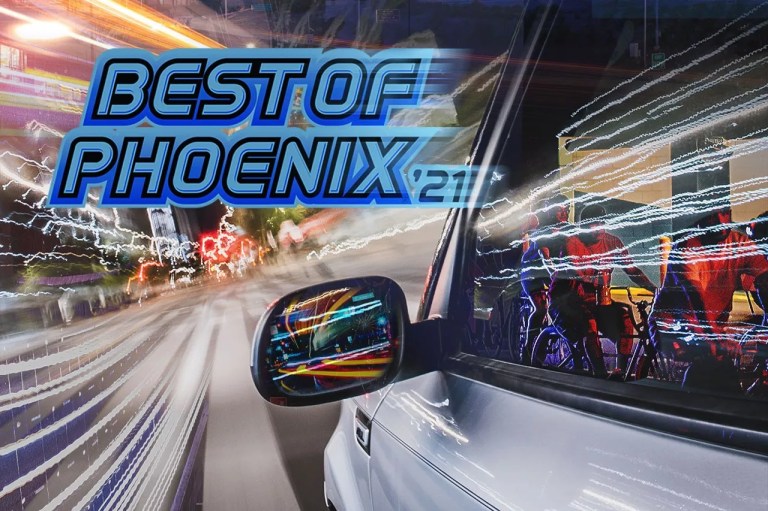Best Temporary Public Art
The war of words was in full swing this year as partisans filled public and online spaces with opinions about immigration, voting, public health, and more. That war was poignantly addressed in “Text as Image,” an outdoor exhibition of text-based art created as part of ASU Art Museum’s “Pilot Projects” series. The temporary public artworks included Jacob Meders’ Warbird Press vending machine with prints addressing colonialism and Indigenous lands, Kristin Bauer’s Dia/Chronic banner confronting propaganda and white supremacy, Hugh Hayden’s Pillory sculpture referencing police barricades and medieval stocks, and Iván Argote’s Tiernos, We, Somos and Strong installation of concrete chairs addressing human interactions during polarized times. It was the perfect collection of temporary public artwork for the times, conveying not only the perils of the present moment but the possibilities for a less fractious future.

